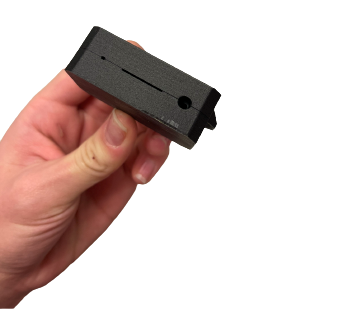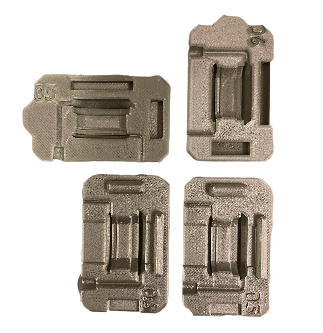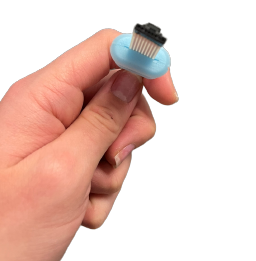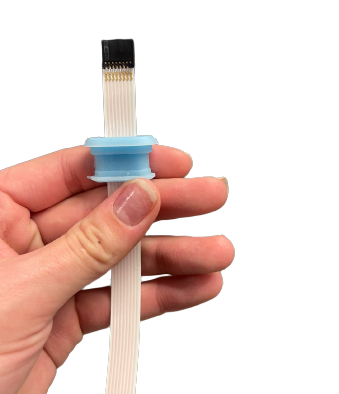Background
The Fikst team had created a custom device for the client to use in an incubator. The device powered and regulated flow of cell media on microfluidic chips. The entire device had to run at 36° C and 80% relative humidity.
The Problem
Due to the humidity, condensation was forming on the flex cables, then dripping down the cable through the cable's hole in the device cover, and onto the mother board where the cable was connected. We observed corrosion on the PCB and experienced electrical issues to due to this problem.
The Skills
- Iterative design
- Silicone casting
- FDM 3D-printing
- Mold design in CAD
- SolidWorks PDM documentation
- Silicone hardness knowledge
The Process
To prevent water from entering the device, I designed a silicone gasket which created a water-tight seal around the flex cable that connected the microfluidic chips to the device.
To create this gasket, designed a 2-part mold in SolidWorks, which I 3D-printed. I utilized a Markforged 3D-printer for these molds due to the resolution and density requirements of the mold. I clamped the mold with a thin piece of polycarbonate in the middle to create the slit for the cable, then injected the silicone through a syringe, and left them to cure for a hour inside an oven.
I prototyped and tested several versions this way with different dimensions, geometries, and silicone types with varying hardness.
Testing the water-tight seal created around flex cable

Assembled mold

Inside of the 2-part mold (Rev 05 & 06)
Main challenges
- Creating a water-tight seal around such a thin cable
- Creating a seal that was water-tight, but not so tight that it couldn't be pressed into the hole with reasonable force
- Deciding which hardness of silicone was best suited for this application
Some of the 9 iterations of molds I designed & printed
Final gasket: Rev 09
The Result
After 9 rapid revisions of the gasket and 3 types of silicone, I designed a gasket that created a water-tight seal around the cable, while still being easy enough to assemble to the device by hand. I then printed a total of 5 molds and produced over 25 gaskets. I then headed over to the clients' lab and assembled all of these gaskets into the devices.
This project lasted about 3 weeks from identification of the problem to implementation of the solution.


8 gaskets assembled into 2 devices
